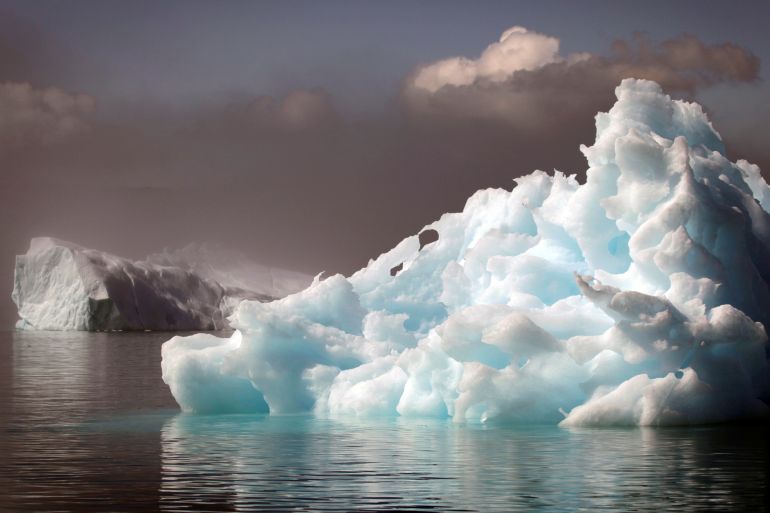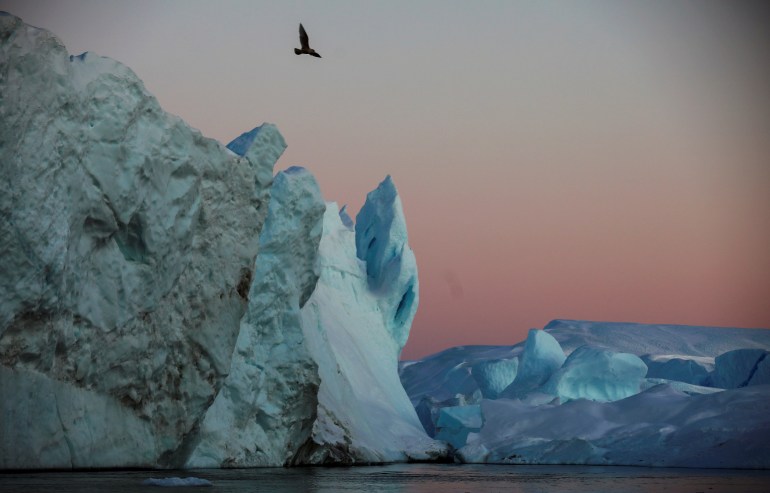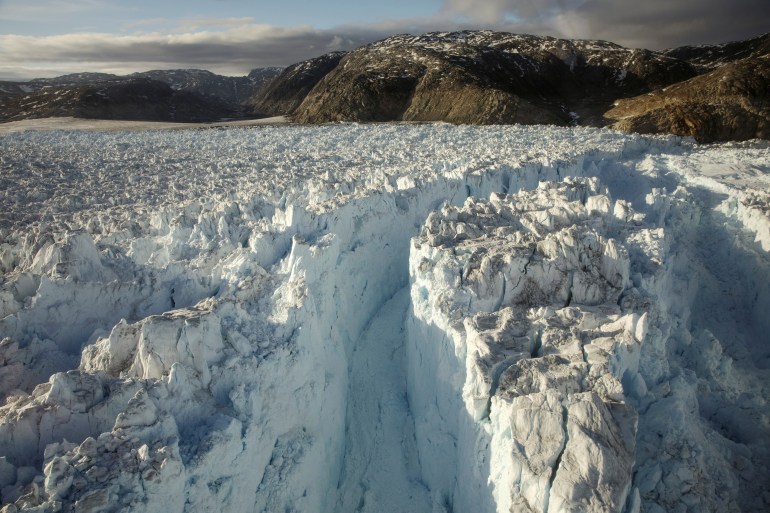Greenland already locked in to huge sea level rise: Study
The 27cm predicted sea rise is more than twice as much as scientists previously expected from Greenland’s melting ice sheet.

Greenland’s fast-melting ice sheet will cause a huge sea level rise with potentially ominous implications over this century as temperatures continue to rise, according to a study published on Monday.
Melting “zombie” ice from the enormous Greenland ice sheet will eventually raise the global sea level by at least 27 centimetres (10 inches) just on its own. “Zombie”, or doomed ice is still attached to thicker areas of the sheet but is no longer getting fed by larger glaciers.
Keep reading
list of 4 itemsClimate Wars: Why is the US so divided about climate change?
Will embracing climate sabotage help save the planet?
Is DR Congo putting oil and gas before the global climate crisis?
The study in the journal Nature Climate Change said sea rise could reach as much as 78cm (30 inches) – enough to swamp vast swathes of low-lying coastlines and supercharge floods and storm surges.
This should serve “as an ominous prognosis for Greenland’s trajectory through a 21st century of warming”, the authors said.
By contrast, last year’s Intergovernmental Panel on Climate Change (IPCC) report projected a range of 6-13cm (2-5 inches) for likely sea level rise from Greenland ice melt by the year 2100.
Glaciologists found regardless of any future fossil fuel pollution, warming to date will cause the Greenland ice sheet to shed 3.3 percent of its volume, committing 27.4cm sea level rise.
The study’s lead author Jason Box, a glaciologist at the Greenland survey, said it is “like one foot in the grave”.
Co-author William Colgan, a glaciologist at the Geological Survey of Denmark and Greenland, said: “This ice has been consigned to the ocean, regardless of what climate [emissions] scenario we take now.”

‘Radically different’ methodology
The theory that researchers used was initially developed to explain changes in Alpine glaciers, said Box.
This holds if more snow piles up on top of a glacier, it causes lower areas to expand. In this case, the reduced snow is shrinking in lower parts of the glacier as it rebalances, he said.
Box said the methods his team used were “radically different” from computer modelling but could complement this work to predict the effects of sea level rise in the coming decades.
He said while climate change was raising more immediate threats such as food security, the accelerating pace of sea level rise will become a huge challenge.
“It’s kind of decades in the future when it will just force its way onto the agenda because it will begin displacing people more and more and more,” said Box.

This is the first time scientists calculated a minimum ice loss – and accompanying sea level rise – for Greenland, one of Earth’s two gigantic ice sheets that are slowly shrinking because of climate change from burning coal, oil and natural gas.
The world has warmed an average of nearly 1.2 degrees Celsius (2.4 Fahrenheit) since pre-industrial times, unleashing a catalogue of impacts from heatwaves to more intense storms.
Under the Paris climate deal, countries have agreed to limit warming to 2C (4.0F).
But in their report on climate effects this year, the IPCC said that even if warming is stabilised at 2C to 2.5C (35.6F to 36.5F) “coastlines will continue to reshape over millennia, affecting at least 25 megacities and drowning low-lying areas”, which were home to up to 1.3 billion people in 2010.
Colgan said his research team does not know how long it will take for all the doomed ice to melt, but making an educated guess it would probably be by the end of this century, or at least by 2150.